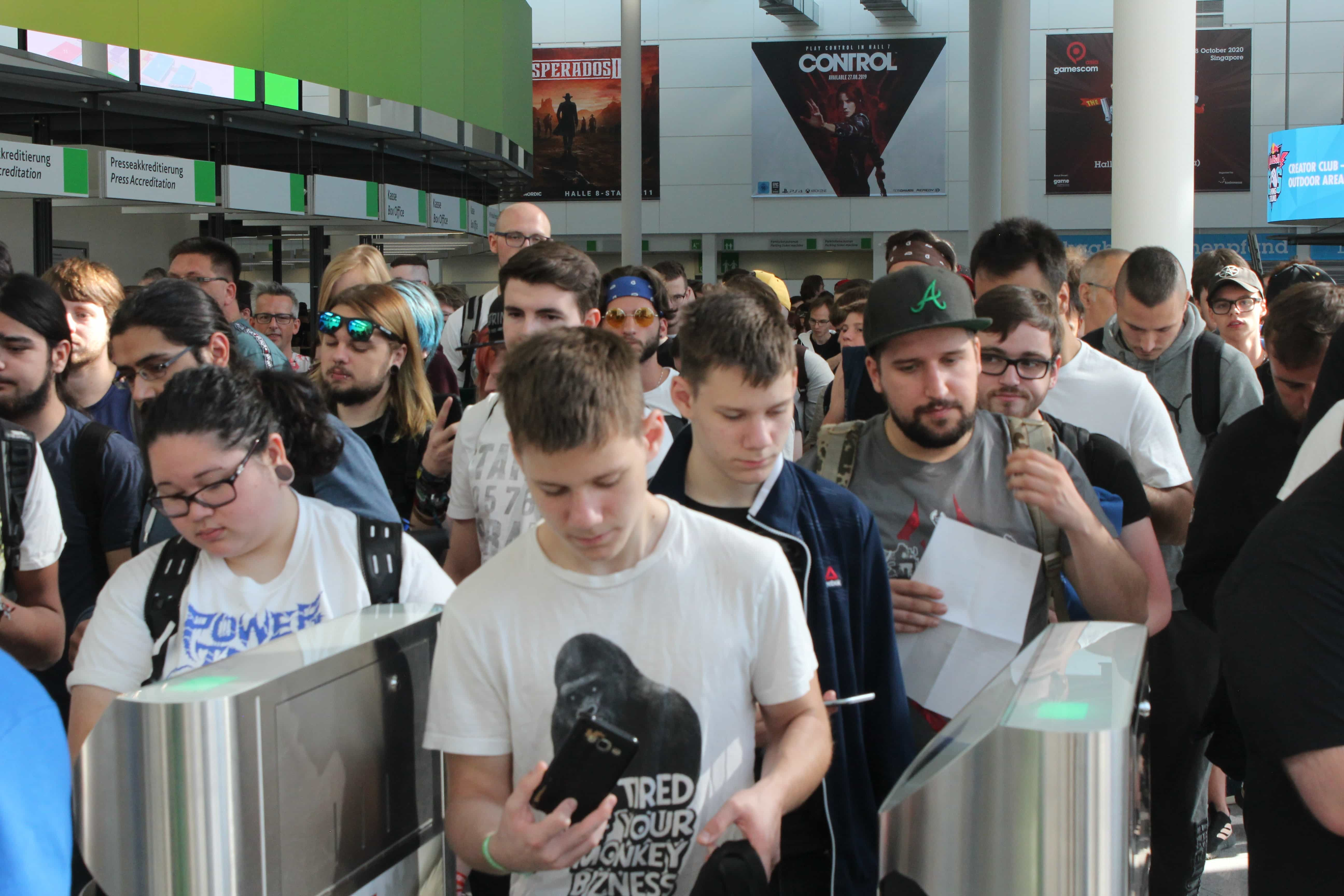Marketing to Gamers and the Gaming Community: The Complete Handbook

What is a game without its fans? There are a lot of big gaming communities out there, full of players that actively engage in the games, content, events, and more! But all of these communities started from a small seed, carefully nurtured by the game devs and early fans before they grew into big names known all over the world.
So, what does this mean for you? It’s easy! You need to start boosting your game’s community. So without further ado, let’s jump into what you need to know about your audience.
Menu
- Why the gaming audience?
- Who are your players?
- Segmenting your playerbase
- A specific segment: Teenagers
- Whales, dolphins and minnows
- Getting player trust
- Keeping your player acquisition costs low
- Keeping your players playing
- Understanding communities
- Growing your community
- Platforms to use
Why the gaming audience?
Video games and the gaming audience hold potential not just for game studios, but for other industries too. This captive audience is engrossed by video games, but also by related content outside gaming platforms including esports, streaming, social media, and events.
They’re also swayed by good marketing. Good marketing here means subtle product placements, non-obtrusive ads, valuable influencer collaborations, and more.
So, for brands of all industries curious about entering this space, get all you need to know in 10 Reasons Why Gamers Are 2023’s Most Powerful Marketing Audience.
Who are your players?
What does your audience want to see from your brand? This is a crucial question to answer before you’re able to start marketing to them. But another thing to remember is that there are probably a few things you SHOULDN’T do as well.
After all, gamers are a mixed bunch. You can’t market to them based on stereotypes, and what your audience looks like compared to your competitors’ can be very different. Don’t fall into the trap of generic marketing. Thankfully, there are a few basic guidelines that you can follow—no matter what type of playerbase you have.
Check them out here inThe Dos and Don’ts of Marketing to Gamers!
Segmenting your playerbase
Your audience is unique, but marketing to them as a single entity isn’t enough. That’s why you need to take your audience segmentation even further than what we discussed in the previous section. You can do this by creating gaming buyer personas.
A buyer persona is an example character that represents a specific micro-segments of your playerbase. They outline a number of things about what a portion of your target audience could look like including their age, gender, location, interests, and activities. It is recommended that you create more than one to more directly reach them with customized content, messaging, and ads.
Find out more aboutWhy You Need Buyer Personas For Your Game Marketing Strategy today!
And learn how to make them in How to Create Player Buyer Personas For Video Game Marketing!

A specific segment: Teenagers
The younger generation are huge gamers, and make up the second largest gaming population in the US. If you’ve got this playerbase in your audience, keep reading!
Figure 1: Distribution of video gamers in the US in 2021, by age group. Source:Statista
Remember that you’ll still need to create buyer personas for your teenaged playerbase, as not all of them will be attracted to the same offers or content. But when targeting this younger age bracket, there’s a few things you need to keep in mind.
After all, this share of the market is underaged, which means that you need to take special precautions to ensure that they aren’t exposed to any content or advertising that can harm them in any way. Be sure to take precautions with transparency, financial security, and gaming regulations to ensure that your game is able to stay in the market.
Does this sound stressful? Don’t worry, let us tell youWhat You Need to Know About Marketing Games For Teenagers.
Whales, dolphins and minnows
Not only do you need to reach your audience, but monetize them too. Even if your game is free, it still took time, effort and money to make, so you’ll probably want to monetize it somehow. But be warned, you cannot simply launch a single campaign and expect each level of your playerbase to jump at it. Again, you need to segment your audience.
Three common monetization levels in the F2P sector are whales, dolphins and minnows. Each has different spend levels, which means that they won’t be receptive to the same advertising. Of course, this also depends on what your game is like and whether they engage with it loyally. Some players may have the money to spend, but aren’t interested enough to play. Others might be less willing to monetarily invest, but are happy to spend much of their free time in your game.
Whatever the case is, you need to know what each of these segments means and how to reach them. And don’t just think that you should go for the big spenders (though of course, you should target them as a priority)!
Get on top of these types of players inF2P Game Monetization: How to Market to Whales, Dolphins and Minnows.

Getting player trust
By now you’ve probably got some idea of what your audience is like and what you’ll need to do to ensure your marketing is effective. Cool, this means that you can start building up your playerbase! But if you can produce quality content and advertisements that are helpful and authentic, then you’ll be able to generate trust from your players too.
But this is a valuable asset that is difficult to generate without continuous care. It can also be lost at any moment if you make a wrong move. You must implement this as a key factor in all marketing strategies, but how do you get started?
It’s easy! You follow our guide inGame Brand Trust: 6 Strategies to Get Gamers on Your Side.
Keeping your player acquisition costs low
Hey, we’ll say it — advertising can be expensive. This is even more true for the gaming industry, where players are highly segmented and easily swayed by each other.
A good first step to reducing your ad spend is by optimizing how much it costs to obtain players. Your customer acquisition cost (CAC) is a key metric that you must be tracking! A good gaming studio will have a low CAC and a high player lifetime value, meaning it’ll cost you less to acquire them but they’ll invest more in your game!
Keep those costs low with 5 Effortless Ways to Improve Your Player Acquisition Costs.
Keeping your players playing
With high retention rates comes a better chance to ensure that your players don’t drop out of the funnel. We touched on this point briefly in the section about marketing to whales, dolphins and minnows. If you get your players to stay, you can get them to pay as well! You may have even experienced this yourself in a great game.
But the sad truth is that for the majority of games, the player retention drops down to the single digits after the first month of release. So, you need to implement some retention strategies for players that already downloaded or purchased the game. If you’re able to retain these players, chances are that they will spend on additional content or recommend the game to their friends!
Keep them playing with our6 Tips to Help Strengthen the Player Retention for Your Game in 2022.
And bump up those numbers with marketing exclusive in-game events the right way with Player Engagement and Retention: 5 Ways to Market Your In-Game Event.

Understanding communities
Community building is no easy task. But to build a community, you need to understand what it takes. It is an essential part of any good game marketing strategy, so let’s take a quick look at what we recommend.
You need to know:
- What a good gaming community is
- Existing communities that you could consider joining
- How to start your own community (and what to do to get players to join and stay)
- How to market in a community
- What you need to include in your marketing strategy
- And marketing trends that work well in communities
Not enough detail for you? Don’t worry, we cover each of these points inMarketing to Gamers: Understanding the Gaming Communities.
Growing your community
Your community won’t start off with thousands of members. But if you’re able to provide a lot of value to your potential members, then you’ve got the opportunity to grow.
Growing a community means bringing in people who have an interest in your game, both now and in future. It could start off with a few friends or the people you got to try out your early access edition. It could even be people that you brought in with a giveaway or other valuable content. Whatever the reason, your community needs both a reason to join and a reason to stay.
Find out how to get yours off the ground inHow to Grow a Gaming Community.

Platforms to use
Where do your gamers exist? Unfortunately, they’re probably all over the internet. But you’ve got the power to either make smaller communities on multiple platforms or bring the majority of them into one location. We recommend the latter, but it’s your choice!
Choosing the right platform relies on a lot of things, including:
- Your marketing goals
- Your audience
- The platforms that your audience uses (and likes using)
- Your budget
- What kind of content you want to promote there
- The actions you want your audience to take
Sounds like a lot, hey? It doesn’t have to be. Read our platform selection guide here:5 Platforms for Your New Gaming Community.
There are a lot of places you can do this, but one of the most common is Discord. As a game dev, we’re sure you’re already well aware of what this platform is and how some of the biggest gaming communities exist here. But do you know how to use it as a game marketing tool?
Don’t stress, get the facts inShould You Consider Discord For Your Game’s Community?
Get your gaming community off the ground
Here at Game Marketing Genie, we know how to get the word out to your audience quickly and effectively. Creating audience sets and turning them into vibrant communities is something we love, and we’ve helped many game devs around the world boost their audience numbers with our custom strategies.
Want us to help you do the same? We’d love to have a chat about what we can do for you. Reach out to us on our contact page!



